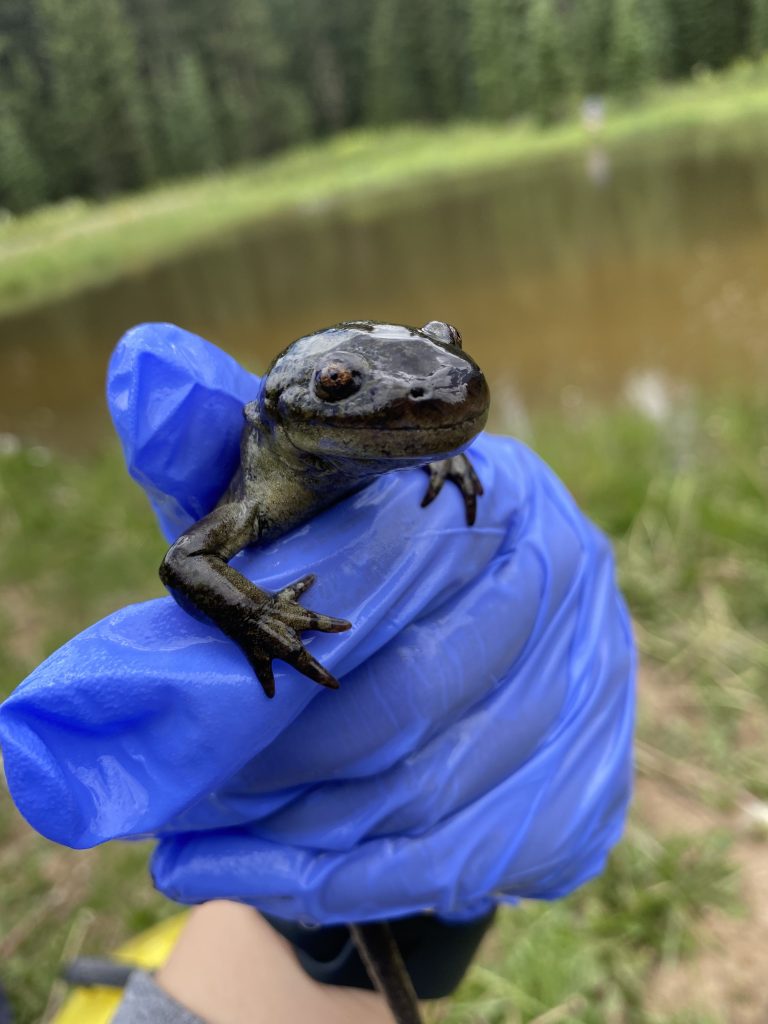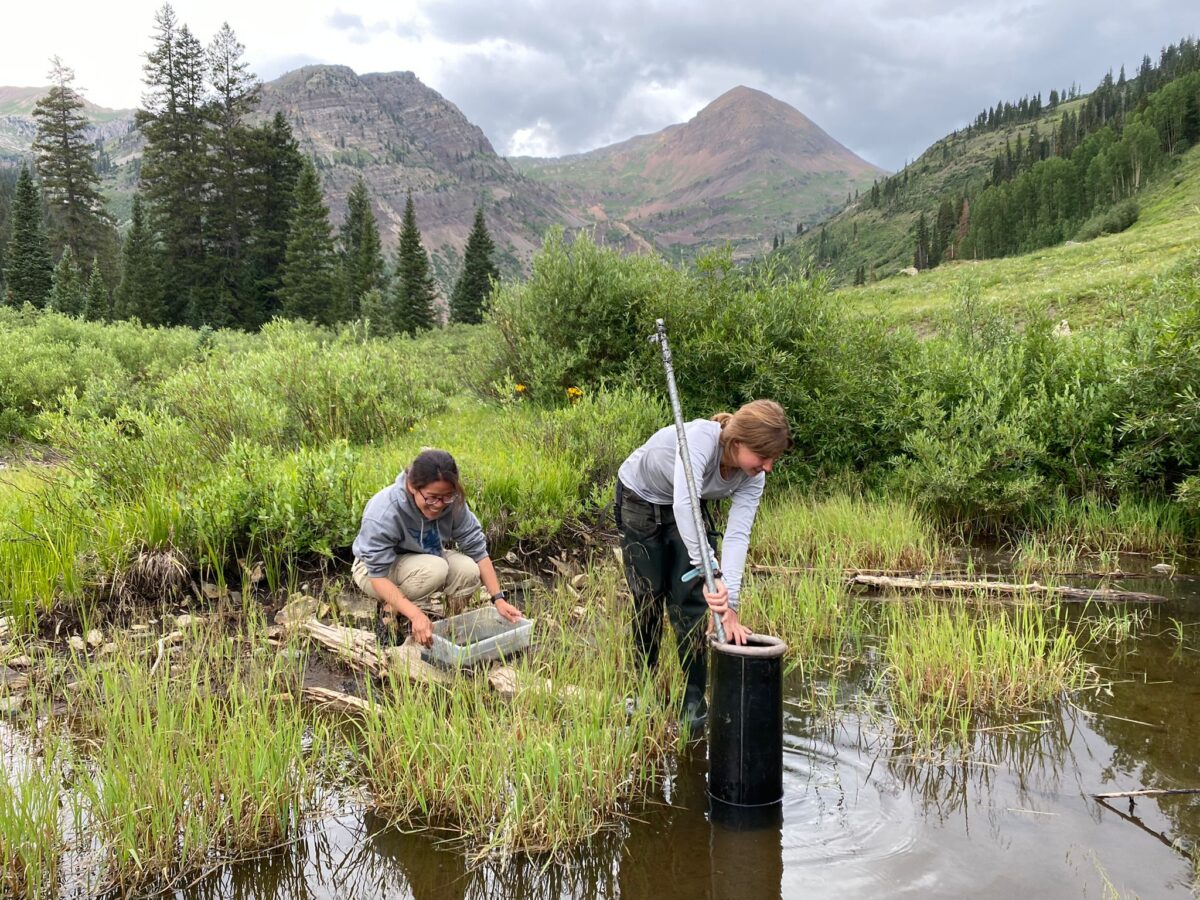In this research rumblings series, we will explore student research topics at the Rocky Mountain Biological Laboratory (RMBL) in Gothic, Colorado. Part two focuses on Amy Haeseler’s research on salamanders, and the complicated and dynamic relationships between amphibians, stocked fish, and bird species.
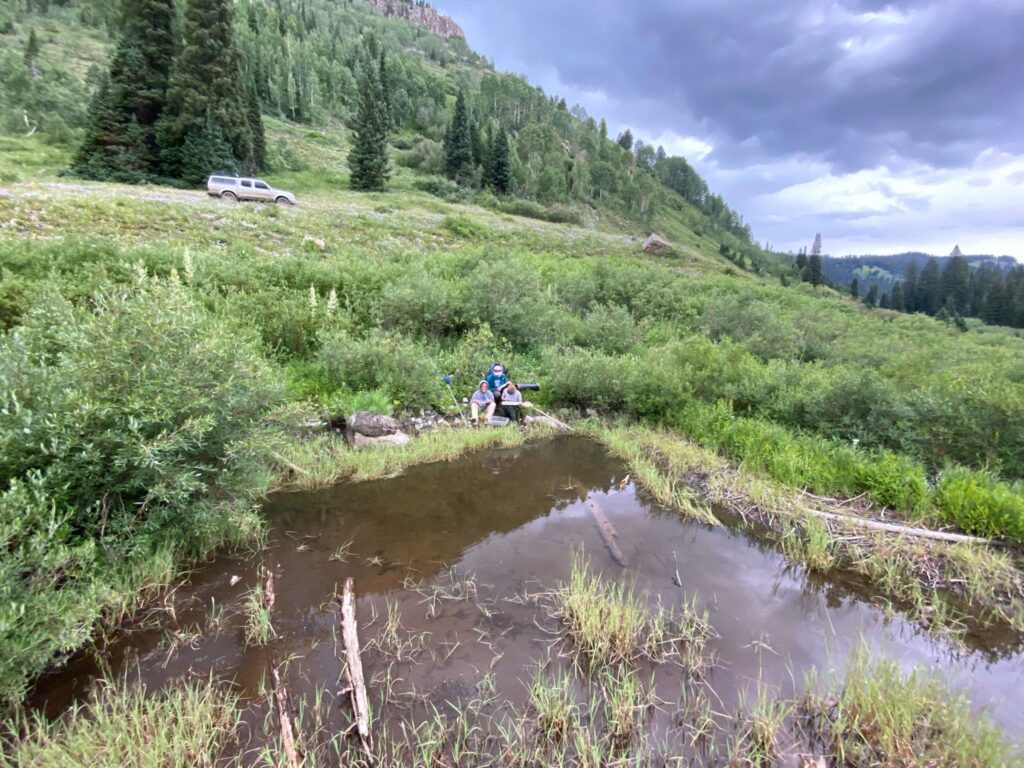
Haeseler graduated from Western in the Fall of 2021 with a degree in Biology and an emphasis in Environmental Biology and Ecology. Like current Western student David Hopp, whose research on the skyrocket flower we profiled in part one, Haeseler’s research stint at RMBL was part of the Research Experiences for Undergraduates (REU) program housed under the National Science Foundation (NSF).
Haeseler grew up in Los Angeles and always gravitated towards nature when given the chance. In high school, she had an opportunity to work in Condon, Montana just south of Glacier National Park for a few weeks, researching huckleberry plants. “I did that, and I was like ‘oh, this is what I want to do for the rest of my life,” recalls Haeseler.
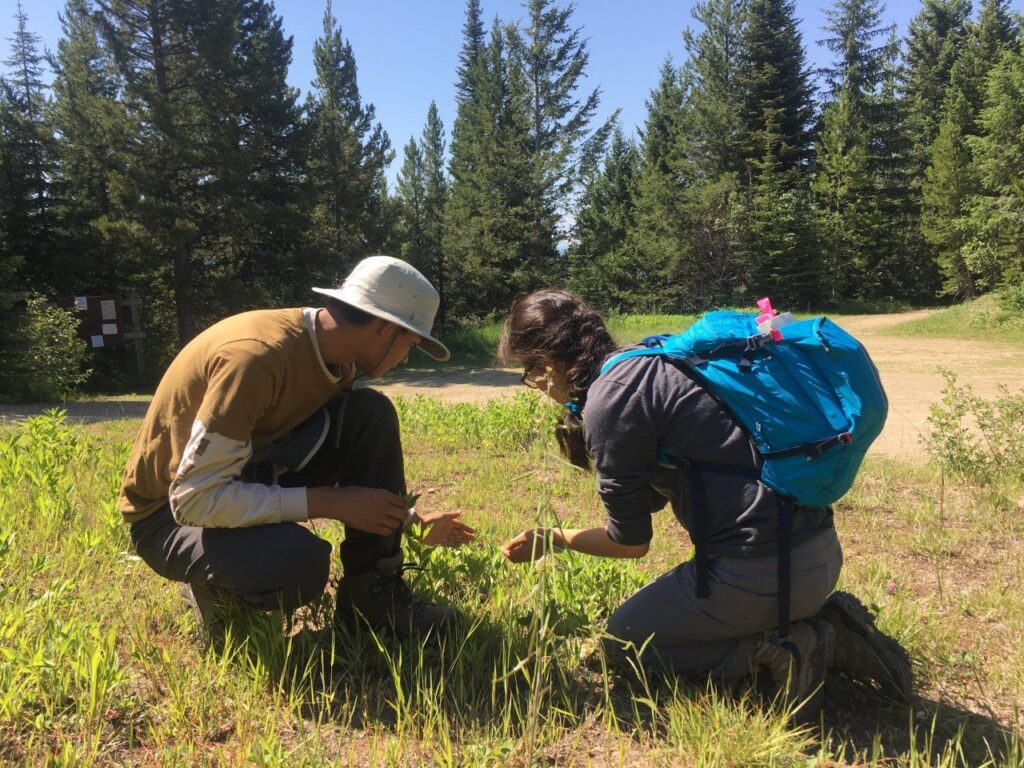
For the summer of 2021, Haeseler was paired with Professor Howard Whiteman, a research biologist from Murray State University in Kentucky who specializes in conservation and evolutionary ecology. She selected a project examining beaver ponds and the interconnected relationships between fish, birds, and salamanders while assisting with Prof. Whiteman’s ongoing salamander study.
Before beginning their research on days Haeseler was slated for Dr. Whiteman’s project, Haeseler, Dr. Whiteman, and various combinations of the 10 other members comprising research team (which included a professor, a postdoctoral researcher, a series of master’s students, and fellow undergraduates from across the country) would drive up past Schofield Pass, and then embark on a steep, one-mile hike beyond Gothic to Mexican Cut, a site owned by the Nature Conservancy.
The process made for long field days chock-full of hiking, sometimes totaling to more than 10 hours. “I wouldn’t trade it for the world,” says Haeseler. While Prof. Whiteman’s research was centralized at one site, Haeseler’s project involved 30 distinct sites.

Dr. Whiteman’s research project is a seasonality study of a specific research plot to examine the same population of salamanders over time, and to observe changes that could be related to snowpack, climate change, or other overarching factors. For Dr. Whiteman’s study, the research team would net the salamanders from the banks of the pond in order to observe, measure, and weigh them, adding precious data points to a study that has now logged more than 20 years of data under the same methodology.
Haeseler’s project studied the richness of bird species in salamander-dominated ponds versus fish-dominated ponds (there are no natural fish populations in these lakes, but brown and brook trout have been stocked in the area for fishing). Haeseler’s initial thinking was that the salamander ponds would perhaps attract a higher richness of native bird species, but she is quick to admit there are a multitude of natural and study variables which can impact the data.
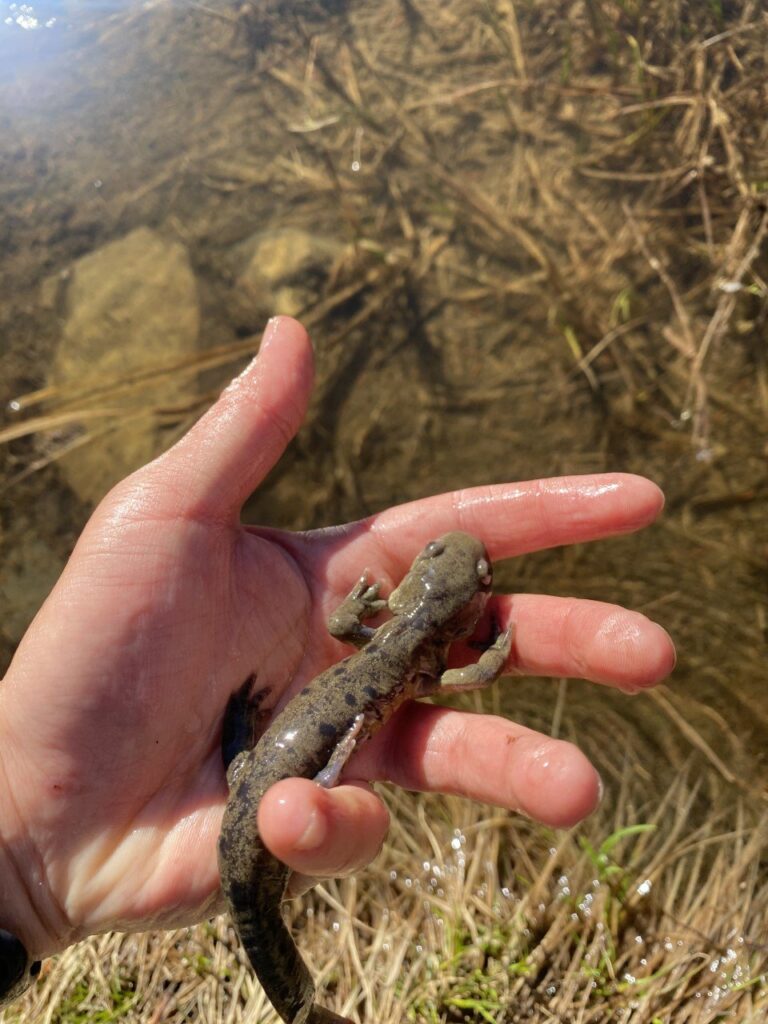
Haeseler tried to predict how localized nutrient cycles would differ in a beaver pond stocked with fish versus a beaver pond with native salamanders (the two animal groups rarely coexist in one small pond; if trout are present they will typically predate and outcompete salamanders). She also thought about how predator-prey relationships and the ecosystem’s food webs would change within the ponds depending on the species present.
For example, small songbirds won’t try to eat salamanders, but larger birds will, and fish driving out salamanders could push away native bird species that depend on amphibians as a food source. “Birds, fish, and amphibians are deeply connected; therefore observing birds may help understand the ecosystem. Bird diversity is a crucial indicator to understand environmental changes and health,” notes Haeseler in her concluding research paper, produced for RMBL.
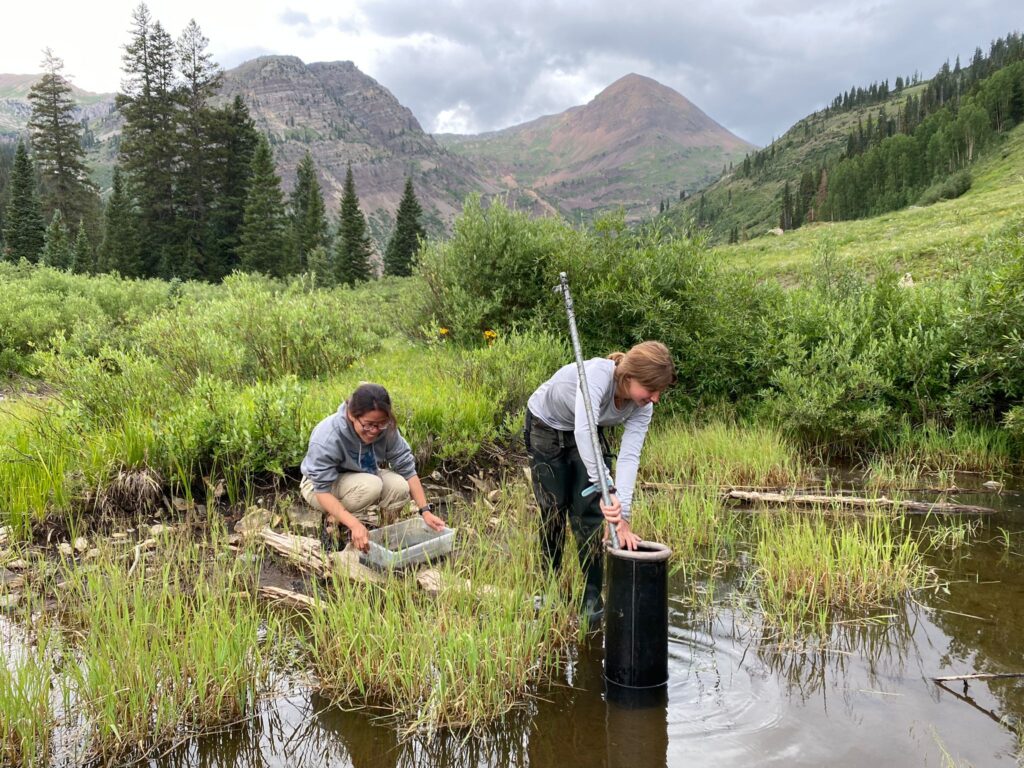
“Typically, in a fishpond, there’s a river nearby flowing through. [While] it’s a really cool study, there’s so many things that could make it more complex,” admits Haeseler. For a chance to get a bigger picture, she collected data in a way that would allow her study to be linked to a related study performed by another student in Prof. Whiteman’s research group, Eva Kerr, an Allegheny College undergraduate, which examined microinvertebrates and macroinvertebrates in the same ponds. Fusing together the invertebrate data, the amphibian and fish data, and the bird data would allow for a broader, more complete view of the ecosystem if another student wanted to take on the task.
During her research project, Haeseler trekked to the different pond sites identified by GPS, conducted a predator survey, and then observed birds both visually and audibly over 15-minute intervals, keeping rigorous notes and using a voice recorder to capture and later identify bird calls. Haeseler came across a lot of pine siskins and white-crowned sparrows in her research (she observed more than 40 bird species), as well as other, larger birds like the spotted sandpipers and the American three-toed woodpecker.
When Haeseler performed her analysis in RStudio, she found a statistically significant difference in the density of bird species between the sites, with fishponds coming out on top for bird species richness. Because of the study’s vast scope across 30 sites (10 with fish, 10 with salamanders, and 10 with no predators), Haeseler freely admits that weather variables and other variables could confound the study, as she only was able to survey each site for one day due to time constraints. “It was peak summer thunderstorm season,” she adds.
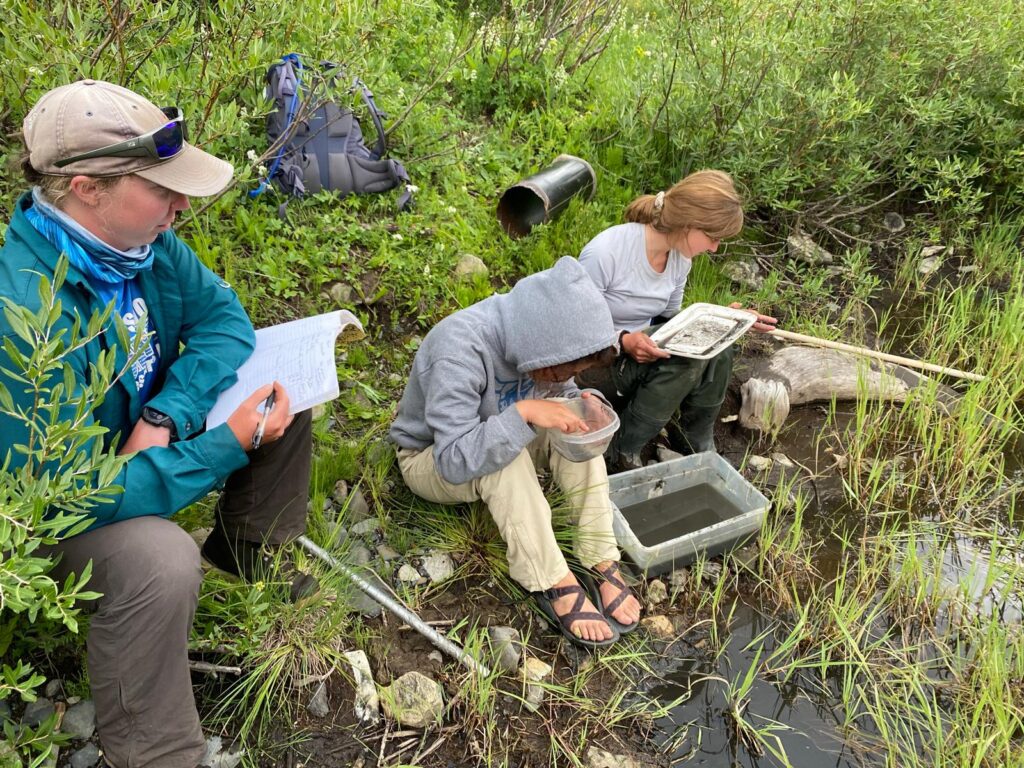
Science, particularly science studying ecological interactions, is extraordinarily complicated. While Haeseler’s research suggests that fish-stocked ponds are beneficial, many of the birds she observed were Passeriformes, which consume seeds, insects, and plants, not fish or salamanders, another interesting point to note.
Haeseler would love for another researcher to come and take up the study. “If anyone in the future wanted to do it, I would be happy to share all my knowledge with them and have it continue,” says Haeseler. If she herself were to return to the study, Haeseler would seek to identify patterns to explain why her data showed that fish ponds promoted more bird diversity than salamander ponds. “It just didn’t sit with me that that should be the answer,” says Haeseler. She notes several key factors in her study’s conclusion deserving of further review and inquiry, including examining the depth of ponds and the surrounding tree canopy as additional variables.
For now, the study is in her past, and Haeseler is weighing her graduate school options and the prospect of focusing on a specific study organism or group. The project marked Haeseler’s first time working with salamanders, an animal grouping she quickly fell in love with. In the immediate future, Haeseler is looking to take a series of wildlife technician jobs, building her research résumé and traveling to new, exciting places to study wildlife and enjoy post-undergraduate life.
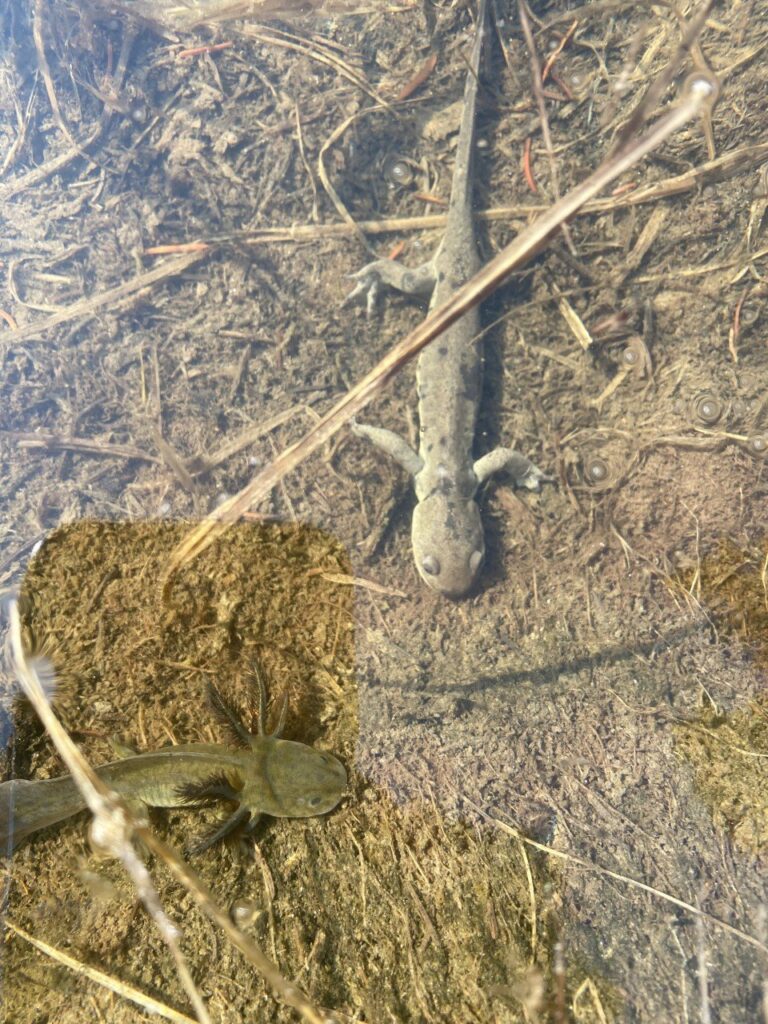
Haeseler’s goal is to one day become a research biologist leading projects of her own. Her dream gig at the moment is to work for the National Wildlife Health Center (NWHC), a research entity which includes a biosafety level three (BSL-3) lab and is based in Madison, Wisconsin. The NWHC operates under the purview of the U.S. Geology Survey (USGS) and studies diseases in wildlife populations, as well as mass die-off events. Haeseler’s interest is piqued by the research variety and collaboration offered by the lab, particularly as the world continues to live through the impacts of Covid-19, a disease many scientists believe to have origins in wildlife populations.
Reflecting back on her time at Western, Haeseler is incredibly appreciative of the resources and opportunities made available to her, including mentorship and advice from Western biology professors Dr. Patrick Magee, Dr. Derek Houston, Dr. Cassandra Osborne (whose frogs Haeseler cared for), and Dr. Amy Honan.
Haeseler cites the quick access up to RMBL that allowed her to continue working down in Gunnison as a huge advantage for Western and biology students, among the wide swath of other biological research opportunities locally.
Last year, she worked on a study with Dr. Magee around great blue herons and their mating patterns on the Slate River, an experience that stuck with her. “The access to the outdoors that I have gotten – it’s those moments where I just can’t believe that this is my life,” she says.
